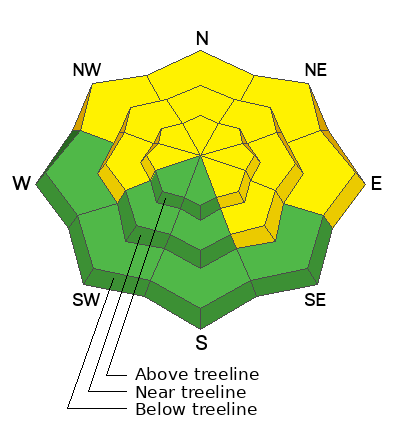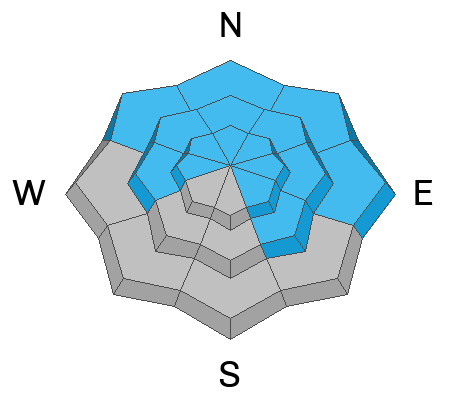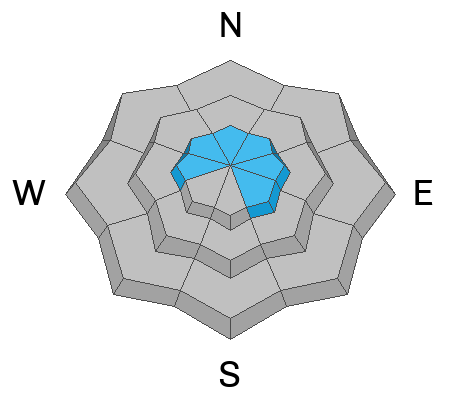Forecast for the Moab Area Mountains

Issued by Eric Trenbeath on
Monday morning, February 26, 2024
Monday morning, February 26, 2024
The overall danger remains MODERATE. Although increasingly unlikely, human-triggered avalanches failing on a buried persistent weak layer remain possible on steep slopes that face W-N-E-SE. The danger is most prominent on steep, northerly aspects. You are most likely to trigger an avalanche in thinner snowpack areas. You can reduce your risk by avoiding steep, rocky areas and slopes with complex terrain features.
Strong southwesterly winds may begin to blow and drift snow into fresh slabs on leeward, northerly aspects today. Expect the problem to become more widespread by tomorrow when new snow overnight has accumulated.
Strong southwesterly winds may begin to blow and drift snow into fresh slabs on leeward, northerly aspects today. Expect the problem to become more widespread by tomorrow when new snow overnight has accumulated.
A generally LOW danger exists on slopes facing S-SW.

Low
Moderate
Considerable
High
Extreme
Learn how to read the forecast here









